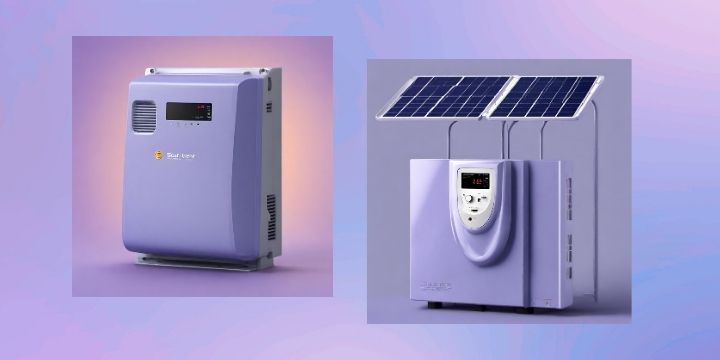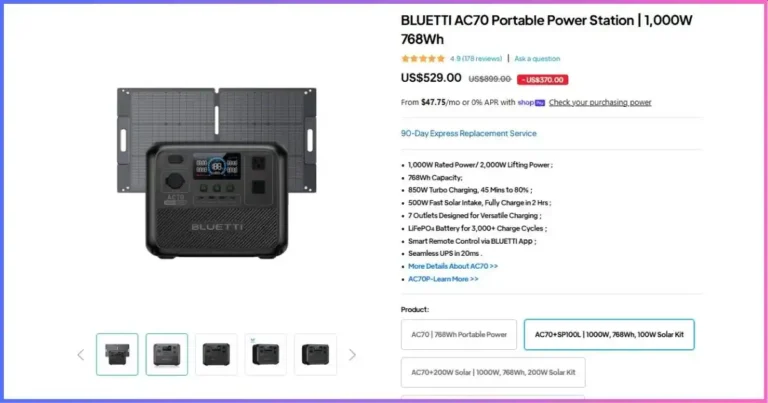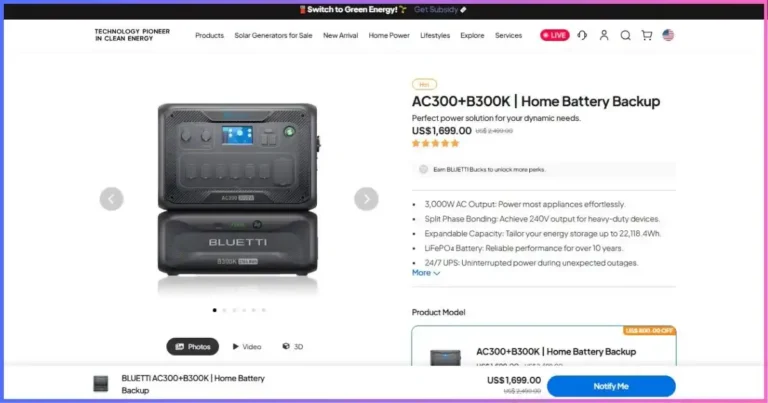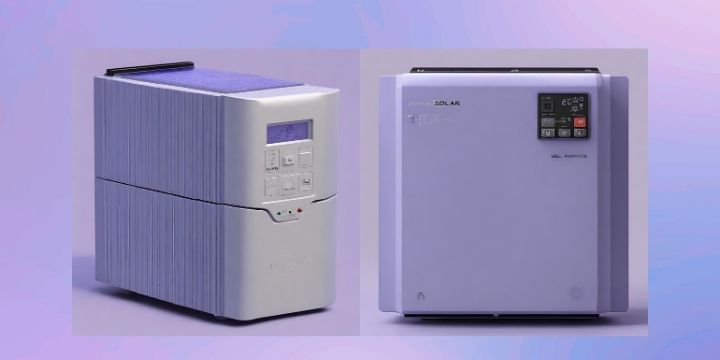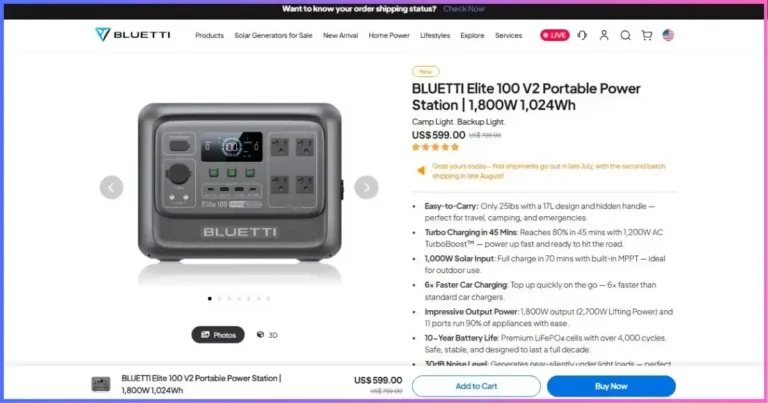A Guide to the Different Types of Solar Panels

As you consider making the switch to solar energy for your home, understanding the options for different types of solar panels is essential to making the best choice for your needs and budget. With technological advancements, solar panels have become far more efficient and affordable.
The three most common types of solar panels for residential use are mono-crystalline, polycrystalline, and thin-film panels. Each has its own advantages and disadvantages in terms of efficiency, durability, and cost that you will want to weigh based on factors like your average electricity usage and local climate.
What are The Different Types of Solar Panels?
Monocrystalline Solar Panels
Monocrystalline solar panels are made from high-purity silicon wafers that are cut into square cells. They have the highest efficiency rate, typically 15-20%, as the cells are cut from a single silicon crystal. However, they tend to be the most expensive type of panel.
Reliable Power Anywhere
Experience the freedom of portable power with Bluetti's cutting-edge solar generators and power stations. Whether you're camping, preparing for emergencies, or reducing your reliance on the grid, Bluetti offers reliable, eco-friendly solutions that keep you powered up anywhere.
Explore Bluetti Products NowPolycrystalline Solar Panels
Polycrystalline solar panels are made from molten silicon that is poured into blocks to cool and harden. The blocks are then cut into square wafers and assembled into panels. They are slightly less efficient, around 13-16%, and cheaper to produce than monocrystalline panels.
Polycrystalline panels work well in warm weather but tend to underperform in hot temperatures.
Thin-Film Solar Panels
Thin-film solar panels use little or no silicon. Instead, they apply extremely thin layers of materials like cadmium telluride, copper indium gallium selenide, or amorphous silicon onto substrates like glass, plastic, or metal.
Thin-film panels are the least efficient, typically 7-13%, but also the most affordable. They work better than silicon panels in warm weather and high temperatures. However, their efficiency degrades faster over time.
Go Green with Bluetti
Take a step towards sustainability with Bluetti’s advanced solar technology. From high-capacity power banks to efficient solar panels, Bluetti helps you harness the power of the sun to reduce your carbon footprint without compromising on performance.
Shop Sustainable Power SolutionsConcentrated Solar Panels (CSP)
Concentrated solar panels use mirrors or lenses to concentrate the sun’s rays onto small solar cells to generate power. They can reach very high temperatures and achieve the highest efficiency of all types, up to 35% in commercial panels. However, CSP requires very intense, direct sunlight to function and only works during the day, so energy storage systems are needed.
CSP panels also require more space and initial investment but can provide a lower cost of energy over the long run.
Monocrystalline Solar Panels
Monocrystalline solar panels are considered the most efficient type of solar panel. They use high-purity monocrystalline silicon with a uniform molecular structure to convert sunlight into electricity. This uniform structure allows monocrystalline panels to be very space-efficient, as more cells can be packed into a smaller area.
Monocrystalline solar panels typically have an efficiency range of between 15% to 22% or higher, meaning they can convert a high percentage of the sun’s light into usable energy.
Due to their high efficiency and space efficiency, monocrystalline solar panels are a popular choice for residential and commercial use where space is limited. However, they tend to be the most expensive type of panel.
Monocrystalline solar panels are recognizable by their distinctive appearance. They have a uniform dark blue color and the individual solar cells are evenly spaced in a rectangular shape. These panels are very durable and long-lasting, with many still producing energy after 25-30 years.
The monocrystalline photovoltaic cells used in these panels are cut from cylindrical silicon ingots grown from molten silicon. The molten silicon is allowed to cool and harden, and then cut into wafers to make the photovoltaic cells.
This production process requires a large amount of energy and material, contributing to the higher cost of monocrystalline panels.
Power Your Adventures
Don't let power outages or off-grid adventures slow you down! Bluetti's portable solar-powered solutions are designed for convenience and efficiency, making them the perfect companion for any lifestyle.
Discover Bluetti's Portable PowerPolycrystalline Solar Panels
Polycrystalline solar panels are a popular and affordable type of solar panel. They are composed of multiple small silicon crystals that have been melted together, giving the panels a distinctive blue hue and an irregular, multifaceted surface.
The multiple silicon crystals in polycrystalline solar panels result in slightly lower efficiency than monocrystalline panels. Polycrystalline solar panels typically have module efficiencies between 13% to 16%, which means they can convert 13% to 16% of the sunlight that reaches them into electricity.
While lower than monocrystalline panels, this is still an admirable ratio and allows polycrystalline panels to produce a substantial amount of energy.
The lower silicon purity and irregular surface of polycrystalline panels can result in more wasted space and higher heat loss within the panel. However, polycrystalline solar panels often have a cost advantage over monocrystalline panels due to lower silicon purity requirements and cheaper manufacturing processes.
They also have a smaller environmental footprint due to less waste silicon during production.
For residential and commercial use, polycrystalline solar panels remain a practical and popular choice, especially if budget is a concern or maximizing production is not the top priority. Their lower costs and reduced environmental impact, combined with reasonable efficiency and durability, make them an attractive option for many property owners looking to adopt solar energy.
Thin-Film Solar Panels
Thin-film solar panels provide an alternative to traditional silicon panels. They are composed of one or more thin layers of photovoltaic material deposited onto a substrate, such as glass, plastic, or metal. The thin films absorb light to generate an electric current.
Thin-film solar panels have several advantages over silicon panels. They have a better temperature coefficient, meaning they are less affected by high temperatures. Their power output is not reduced as much in hot weather.
Thin-film solar panels also have a broader spectrum absorption range, including more infrared and ultraviolet light. They can absorb light that silicon panels cannot.
Thin-film solar panels are lightweight and use less semiconductor materials than silicon panels. They require fewer raw materials to produce, so they tend to be more affordable. However, thin-film solar panels typically have lower efficiency than silicon panels, often 10-15% less. More surface area is needed to generate the same amount of electricity.
The three most common types of thin-film solar panels are:
- Cadmium telluride (CdTe) solar panels: Made of cadmium and tellurium, they are the most affordable but contain the toxic metal cadmium.
- Copper indium gallium selenide (CIGS) solar panels: Made of copper, indium, gallium and selenium. CIGS panels have the highest efficiency of the thin-film types but use scarce, expensive metals.
- Amorphous silicon (a-Si) solar panels: Made of silicon, they have the lowest efficiency but do not use scarce materials. Amorphous silicon is non-toxic, abundant, and inexpensive.
Thin-film solar panels provide a viable and eco-friendly alternative energy solution. As technology and efficiency improve, they offer an important option for residential and commercial solar installations.
Comparing the Pros and Cons of Each Solar Panel Type
Monocrystalline Solar Panels
Monocrystalline solar panels are considered the most efficient of the different types of solar panels. They are made from high-purity silicon and have cells with a uniform crystal lattice structure, allowing them to convert a high percentage of sunlight into electricity.
However, monocrystalline panels tend to be the most expensive due to the complex manufacturing process. They also require the largest amounts of silicon to produce, which can increase costs.
Polycrystalline Solar Panels
Polycrystalline solar panels contain cells made from molten silicon that cools and hardens into crystals of varying sizes and orientations.
They are less efficient at converting sunlight into energy compared to monocrystalline panels but tend to be slightly cheaper to produce as they require less silicon.
Polycrystalline panels also commonly take up more space than monocrystalline panels to achieve the same energy output.
Thin-Film Solar Panels
Thin-film solar panels have the lowest sunlight conversion performance of the different types of panels but are the least expensive to manufacture.
They use little to no silicon, instead applying extremely thin layers of materials like cadmium telluride or copper indium gallium selenide onto a surface to absorb and convert sunlight into energy.
While thin-film panels require the most space to achieve the same energy production as crystalline panels, they can be an affordable option for some homeowners. They are also very lightweight, flexible, and durable.
Disclosure: We may earn commission for purchases that are made by visitors on this site at no additional cost on your end. All information is for educational purposes and is not intended for financial advice. Read our affiliate disclosure.

